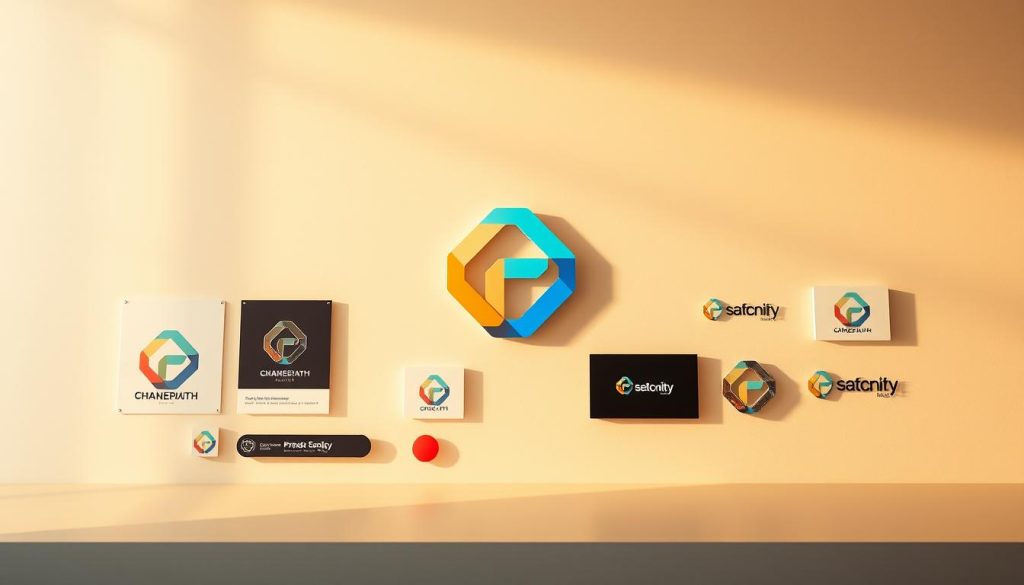In today’s digital world, consumers face a constant stream of messages. Standing out is a real challenge. This comprehensive guide is designed to help French companies cut through the noise.
So, what exactly is brand awareness? It refers to the level of familiarity people have with a company. This concept is the foundation for all marketing efforts and future growth.
This familiarity has two main parts. Recognition is when a customer remembers seeing your logo or name before. Recall is when they think of you first when they need a product you sell.
For any company in France, building this recognition is not just an option. It is a strategic must. It directly builds trust and influences buying choices. A clear approach to brand awareness helps businesses stand out with real benefits.
This article provides practical steps and strategies made for the French market. You will learn how to create a lasting impression and become a trusted name.
Table of Contents
Key Takeaways
- Brand awareness is the familiarity consumers have with your company.
- It consists of two key elements: brand recognition and brand recall.
- Establishing a strong presence is crucial for standing out in a crowded marketplace.
- It builds trust and credibility, which directly influences purchasing decisions.
- This guide offers actionable strategies specifically for businesses in France.
- A strategic approach can create competitive advantages and support premium pricing.
- You will learn how to systematically build and measure your company’s presence.
Understanding the Fundamentals of Brand Awareness
The journey to becoming a household name starts with grasping essential consumer memory mechanisms. Two key concepts form the foundation of market presence.
Key Terminology: Recognition and Recall
Recognition occurs when people identify your company through visual cues. They might spot your logo or colors and know they’ve seen you before. This confirms prior exposure even if they can’t recall your name spontaneously.
Recall represents a deeper connection. Consumers retrieve your company from memory when thinking about a product category. They don’t need visual prompts to remember you.
The Evolution from Unawareness to Top-of-Mind
David Aaker’s pyramid illustrates how companies progress through four levels. It begins with complete unfamiliarity where people haven’t encountered your business.
The second level involves recognition. Consumers can identify your company when they see it. The third stage reaches recall, where they remember you without visual aids.
The pinnacle is top-of-mind status. Your company becomes the automatic first choice. Achieving this level requires a strategic approach to market presence that builds mental connections.
Understanding this progression helps French businesses set realistic goals. It informs which marketing strategies work best at each stage of growth.
Defining Brand Awareness: Recognition vs. Recall
For French enterprises, distinguishing between different levels of consumer familiarity can make or break marketing campaigns. Clear definitions prevent wasted resources and ensure strategic alignment.
What Is Brand Awareness?
Brand awareness refers to how well people know your company. It measures familiarity across different situations. This concept includes both recognition and recall.
Recognition happens when consumers identify your visual elements. They see your logo or colors and remember previous exposure. Recall occurs when people think of your company spontaneously.

Examples and Practical Insights
Consider a French bakery chain. Customers recognize the distinctive storefront design. This demonstrates strong brand recognition. When locals think « fresh croissants » and immediately recall that bakery, it shows successful recall.
Top-of-mind status represents the highest achievement. Your company becomes the automatic first choice. Brand salience focuses on purchase moments specifically.
| Concept | Definition | Consumer Action | Practical Example |
|---|---|---|---|
| Recognition | Identifying a company through visual cues | Spotting a logo and remembering it | Recognizing Carrefour’s red logo |
| Recall | Remembering a company without prompts | Thinking of a company when needing products | Remembering Decathlon for sports gear |
| Salience | Spontaneous thinking during purchase decisions | Immediately considering a company when shopping | Thinking of Vélib’ when needing bike rental |
| Top-of-Mind | Being the first company remembered | Automatic first choice in a category | Thinking of Orange first for mobile plans |
Understanding these differences helps French businesses target their marketing effectively. Each level requires different strategies to move potential customers toward purchase decisions.
Exploring Theoretical Frameworks and Academic Models
Several influential models from marketing research offer structured approaches to building consumer familiarity. These frameworks provide essential tools for developing effective market presence strategies.
Keller’s Dimensions of Brand Knowledge Model
Kevin Lane Keller’s 1993 model reveals how consumer knowledge develops through interconnected dimensions. It positions recognition and image as complementary axes that must progress together.
This framework shows that companies cannot focus solely on visibility. They must simultaneously build positive associations and emotional connections. The model provides a roadmap for creating meaningful equity.
Aaker’s Brand Equity Model and the Brand Awareness Pyramid
David Aaker’s 1991 framework identifies five key components that contribute to overall value. Recognition forms one essential pillar alongside loyalty, quality perceptions, associations, and proprietary assets.
The accompanying pyramid illustrates how companies progress from complete unfamiliarity to top-of-mind status. Each level requires different strategic approaches to move consumers upward.
| Model | Key Focus | Core Components | Strategic Application |
|---|---|---|---|
| Keller’s Dimensions | Consumer knowledge development | Recognition, image, responses, relationships | Integrated strategy building both visibility and associations |
| Aaker’s Equity Model | Brand value creation | Loyalty, awareness, quality, associations, assets | Comprehensive asset management across five pillars |
| Hierarchy of Effects | Consumer decision process | Cognition, affection, conation | Sequential campaign planning from awareness to action |
Understanding these academic foundations helps businesses develop systematic approaches. They provide diagnostic tools for identifying gaps in current strategies.
The Importance of Brand Awareness for Business Growth
The strategic value of consumer familiarity becomes apparent when examining its direct impact on business performance. Market presence serves as the foundation for all marketing outcomes.
According to Nielsen research, 59% of consumers prefer purchasing from familiar companies even at higher prices. This demonstrates how strong recognition translates directly into pricing power.

Familiarity creates psychological comfort that reduces perceived purchase risk. It accelerates decision-making and builds trust automatically.
| Business Aspect | Strong Market Presence | Weak Recognition |
|---|---|---|
| Pricing Flexibility | Premium pricing accepted | Price-sensitive customers |
| Customer Acquisition | Lower marketing costs | Higher acquisition expenses |
| Competitive Advantage | Default choice for consumers | Constant comparison shopping |
| Talent Attraction | Attracts top professionals | Difficulty recruiting quality staff |
The impact extends beyond immediate sales. Recognized companies attract better talent and partnership opportunities. They generate organic word-of-mouth that reduces customer acquisition costs.
French businesses with established visibility enjoy competitive advantages. Consumers facing choice overload default to familiar options. This creates sustainable market share protection.
Understanding this strategic importance enables proper investment in market presence development. Consistent effort over time allows familiarity to compound into significant business value.
Crafting a Cohesive Brand Strategy for French Businesses
French companies seeking to establish lasting recognition must first build a strategic framework that balances visual identity with compelling storytelling. This foundation ensures all marketing efforts work together seamlessly.
Building a Distinct Visual Identity and Storytelling
A strong visual system begins with a memorable logo. This emblem should be simple yet meaningful. It must work across digital and physical platforms.
Effective storytelling transforms abstract concepts into emotional connections. Share authentic stories about your origins and values. These narratives create mental images that stick with consumers.
Consistency acts as the glue that holds everything together. Maintain uniform colors, typography, and messaging tone. This prevents confusion and accelerates recognition.
| Element | Primary Function | French Market Consideration |
|---|---|---|
| Logo Design | Instant visual recognition | Cultural relevance and simplicity |
| Color Palette | Emotional connection | Local color preferences |
| Typography | Readability and personality | French language compatibility |
| Storytelling | Emotional engagement | Authentic French narratives |
| Voice & Tone | Consistent communication | Appropriate for French audience |
Strategic development requires balancing creativity with stability. While campaigns may vary, the core identity remains constant. This approach builds lasting market presence over time.
Digital Marketing and Content Creation to Increase Brand Awareness
Digital channels provide French companies with powerful tools to amplify their market presence. These strategies offer precise targeting and measurable results that traditional methods cannot match.
SEO, Social Media, and Content Marketing Tactics
Search Engine Optimization ensures your business appears when potential customers search for relevant solutions. This creates passive visibility that builds credibility over time.
Social media platforms demand consistent, authentic engagement. With average Instagram engagement rates around 0.98%, success requires content that resonates with specific community segments.
Content marketing establishes authority through valuable blog posts, videos, and podcasts. This approach creates multiple touchpoints that systematically increase company recognition.

Leveraging Generative Engine Optimization (GEO)
GEO represents the next frontier in digital visibility. It optimizes content for AI-driven search engines and generative answers.
This emerging strategy helps French businesses appear in AI assistant recommendations. As consumers increasingly rely on these tools, GEO ensures your company remains discoverable.
Combining traditional SEO with GEO creates comprehensive online visibility across all search environments.
Digital advertising on platforms like Google and LinkedIn enables precise demographic targeting. This rapidly expands reach among carefully defined audience groups.
Leveraging Traditional Media and Offline Activities
Beyond the digital landscape, traditional media and physical interactions offer unique opportunities for French businesses to establish meaningful connections. These channels often face less competition than crowded online spaces while delivering greater credibility.
Print, Radio, and Event Sponsorships
Traditional media channels provide powerful ways to capture attention and create lasting impressions. Print advertising in local newspapers reaches audiences who prefer tangible media. Radio spots and podcast ads target listeners during their daily routines.
Strategic billboard placements in high-traffic areas generate repeated visual exposure. This builds familiarity through the psychological principle of mere exposure. People develop preference for what they see regularly.
Press releases and media interviews offer third-party credibility that self-promotional marketing cannot match. Editorial coverage carries implied endorsement from respected outlets. This enhances your company’s reputation significantly.
- Trade shows and industry events concentrate decision-makers in one location
- Pop-up stores create memorable experiences that generate social sharing
- Event sponsorships align your company with popular cultural activities
- Community involvement demonstrates values beyond commercial interests
These offline strategies help French companies reach new audience segments through authentic interactions. They complement digital efforts to create comprehensive market presence.
Influencer Partnerships & Collaborative Branding Strategies
Modern marketing strategies increasingly rely on trusted voices to amplify company visibility. French businesses can leverage these relationships to reach new audiences effectively.

How Influencer Collaboration Boosts Trust
Influencers have cultivated genuine connections with their followers. When they authentically endorse your products, their credibility transfers to your company.
This trust-building effect creates immediate recognition. Followers see recommendations from someone they already value.
Micro-influencers often deliver better engagement than larger accounts. Their niche audiences provide targeted exposure for specific market segments.
Successful partnerships require alignment between the influencer’s content and your values. Authenticity ensures promotional content feels natural rather than forced.
Co-branding initiatives combine strengths with complementary companies. Joint products or campaigns share audiences and costs while expanding visibility.
Local partnerships with other French businesses create cross-promotion opportunities. These collaborations build community presence while supporting regional networks.
Affiliate programs systematically expand your reach through third-party promoters. These distributed networks create financial incentives for partners to increase your visibility.
Recommended Budget Allocation: Brand Awareness vs. Brand Image
Effective financial allocation between exposure initiatives and perception management determines marketing success. Companies must strategically divide resources to achieve both visibility and positive reputation.
Research from Lucidpress reveals that consistent image cultivation generates up to 33% more revenue. This highlights the importance of balanced investment.
Balancing Exposure with Image Building
Newer companies should focus heavily on visibility campaigns. Established firms can shift resources toward perception refinement. The two approaches work together synergistically.
Consider the 70-20-10 framework as a starting point. Allocate 70% to proven exposure channels, 20% to emerging opportunities, and 10% to experimental approaches.
Mass media and digital advertising build reach quickly. Content marketing and public relations shape perception over time. Regular evaluation ensures both areas receive adequate funding.
Track quantitative metrics like reach alongside qualitative measures of reputation. This balanced approach creates sustainable market presence for French businesses.
Measuring, Tracking, and Refining Your Brand Awareness
The true effectiveness of market presence initiatives can only be determined through rigorous measurement and continuous refinement. French businesses need concrete data to validate their strategies and optimize resource allocation.
Key Performance Indicators and Metrics
Spontaneous awareness studies reveal genuine mental availability. Ask consumers to name companies in your category without prompts. If 40 out of 100 people mention your name, you’ve achieved significant top-of-mind status.
Assisted awareness complements this approach. It tests whether people recognize your company when presented with options. This helps identify gaps between recognition and spontaneous recall.
Digital tracking provides continuous insights. Monitor branded search volume and share of voice compared to competitors. According to HubSpot, 61% of marketers consider share of voice a key performance indicator.
Tools and Techniques for Ongoing Optimization
Google Trends shows whether your name gains momentum or declines. SEMrush reveals search frequency and competitive visibility. Social listening captures organic conversations about your company.
Surveys remain remarkably effective when designed properly. Use representative samples and unbiased analysis. A/B testing compares different creative approaches to identify what improves memorization rates.
Effective market presence management requires establishing baseline metrics. Set specific targets and create feedback loops for continuous optimization based on performance data.
Overcoming Challenges in Building a Strong Brand Presence
French businesses encounter distinctive barriers when working to create lasting impressions in competitive markets. These obstacles test strategic thinking and require innovative solutions.
Differentiation remains a critical question. Companies must find unique positioning that stands out amidst overwhelming consumer choices. This requires deep market understanding.
Budget limitations pressure smaller enterprises. They compete against well-funded rivals with creative approaches. Strategic focus becomes essential for maximizing impact.
Market saturation complicates entry. Established preferences demand that new players identify underserved niches. Innovative angles create space for recognition.
Consistency across touchpoints presents ongoing management challenges. Multiple teams and channels must represent the company coherently. This prevents fragmentation of market presence.
Measurement timing creates reporting difficulties. Consumer familiarity builds gradually over extended periods. Short-term metrics often overlook long-term asset building.
Balancing immediate conversions with foundational efforts challenges marketing teams. Leadership pressure for quick results can undermine sustainable growth strategies.
Overcoming these hurdles requires strategic patience and disciplined management. Creative problem-solving maximizes limited resources. Education about foundational importance ensures stakeholder support.
Conclusion
Achieving lasting market presence requires more than just visibility—it demands strategic consistency across every customer interaction. This comprehensive guide has shown that brand awareness represents a deliberate journey rather than accidental recognition.
French companies must understand that building familiarity is a continuous process. Each touchpoint, from digital channels to personal experiences, strengthens mental connections with your product service. The evidence clearly demonstrates the financial impact of systematic efforts.
Commitment to this strategic approach positions businesses for sustainable growth. By implementing the frameworks and tactics outlined in these guides, companies can systematically increase brand recognition and create valuable long-term assets that compound over time.
FAQ
What is the difference between brand recognition and brand recall?
Recognition happens when a customer sees your logo or name and remembers they’ve encountered it before. Recall is when they can name your company from memory when thinking about a product category. Both are vital parts of a strong marketing strategy.
Why is a cohesive visual identity so important for French companies?
A consistent look—using the same logo, colors, and fonts—builds trust and makes your business instantly recognizable. This distinct image helps you stand out in a crowded market and creates a lasting impression on your target audience.
How can social media help increase my company’s visibility?
Platforms like Instagram and LinkedIn allow you to share engaging content directly with potential customers. Regular posts, interactive stories, and targeted ads expand your reach, foster community, and keep your name top-of-mind.
What role does storytelling play in building a memorable presence?
Effective storytelling connects with people on an emotional level. Sharing your company’s mission, values, and customer successes makes your business more relatable and memorable, turning casual viewers into loyal followers.
How much of my marketing budget should go toward awareness efforts versus image building?
A common starting point is a 60/40 split, with the larger portion dedicated to broad exposure activities. As recognition grows, you can shift more resources toward refining your image and deepening customer relationships.
What are the best ways to measure the impact of my visibility campaigns?
Key metrics include website traffic from direct searches, social media mentions, and survey data that tracks unaided recall. Tools like Google Analytics and social listening platforms provide valuable insights into your campaign’s performance.





